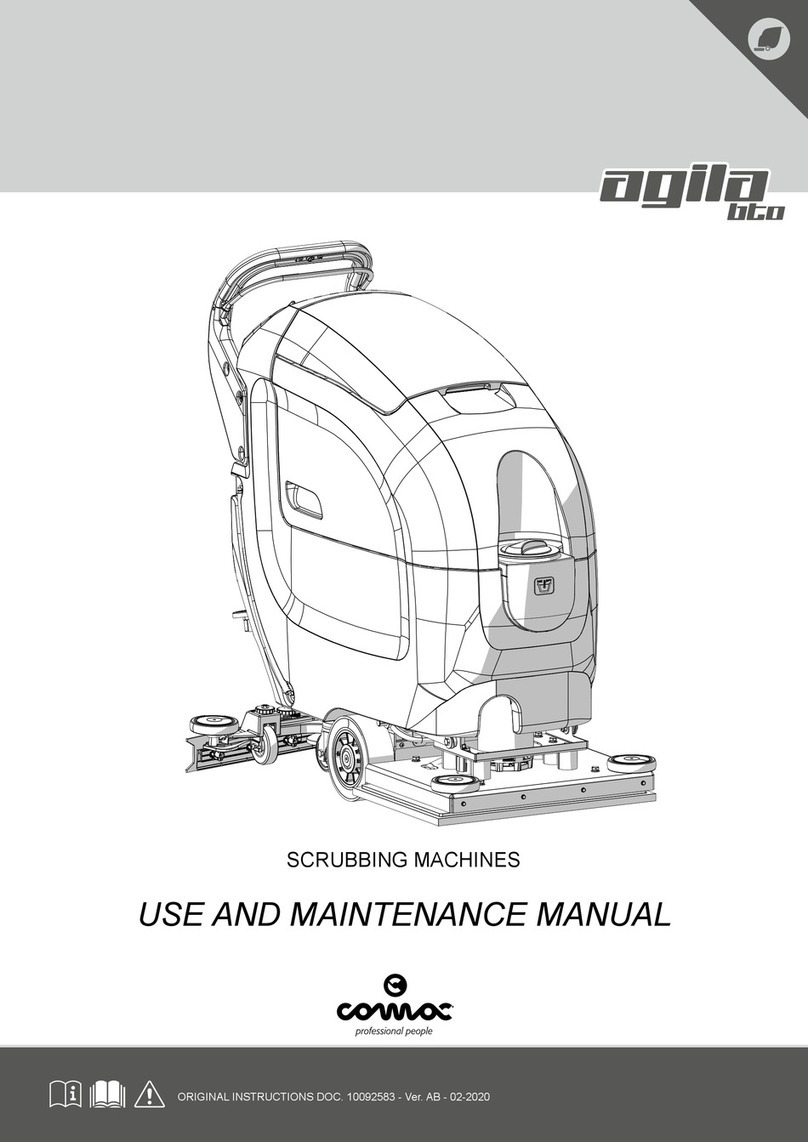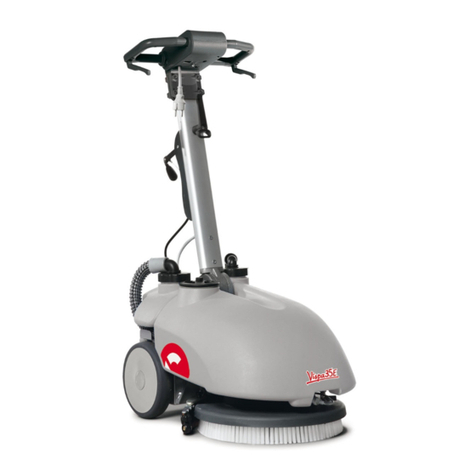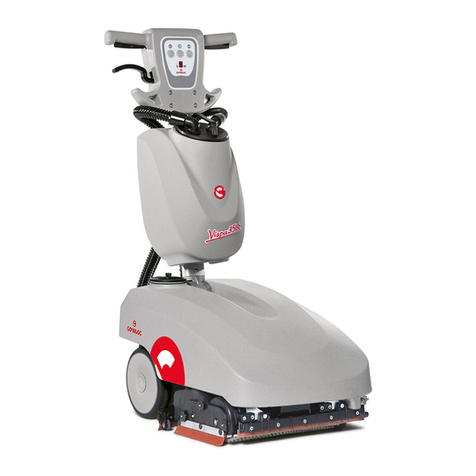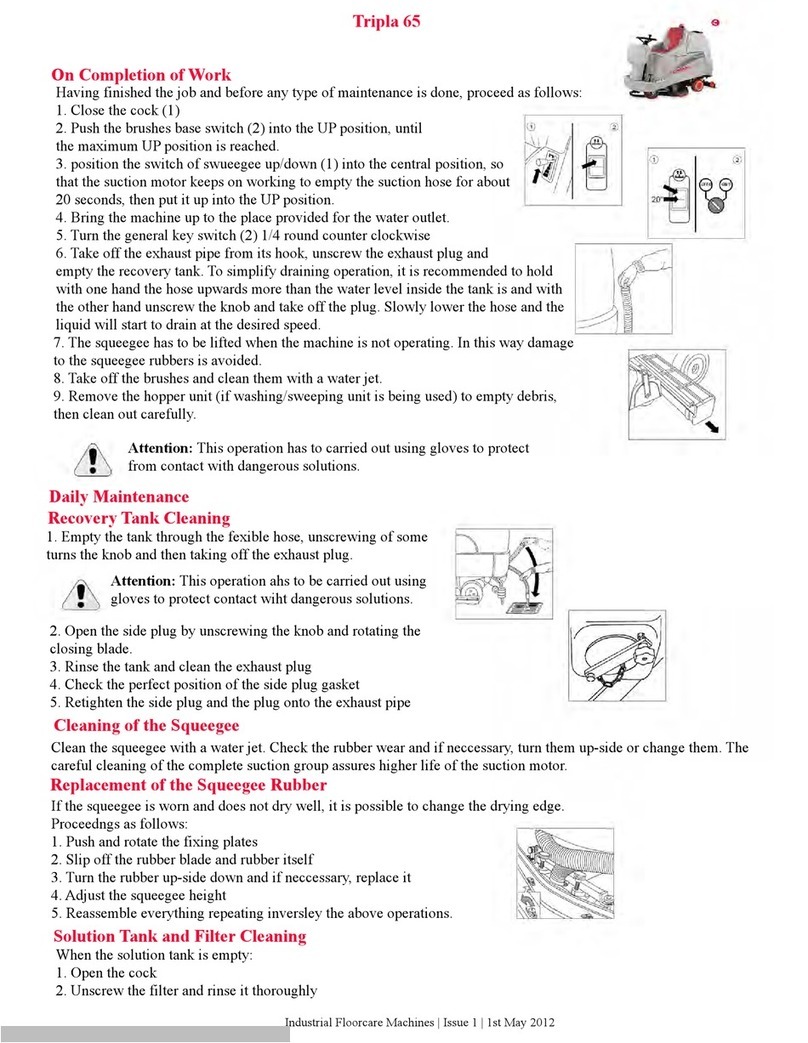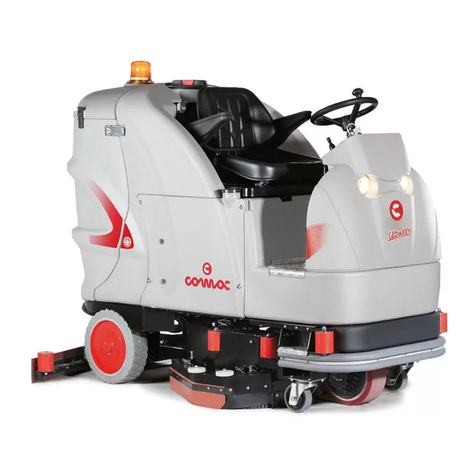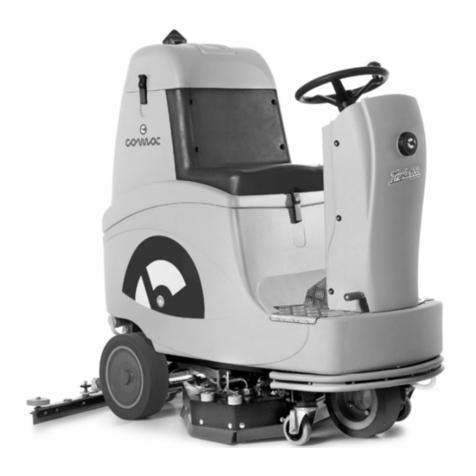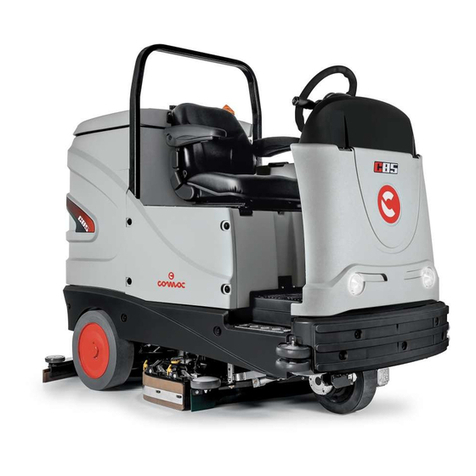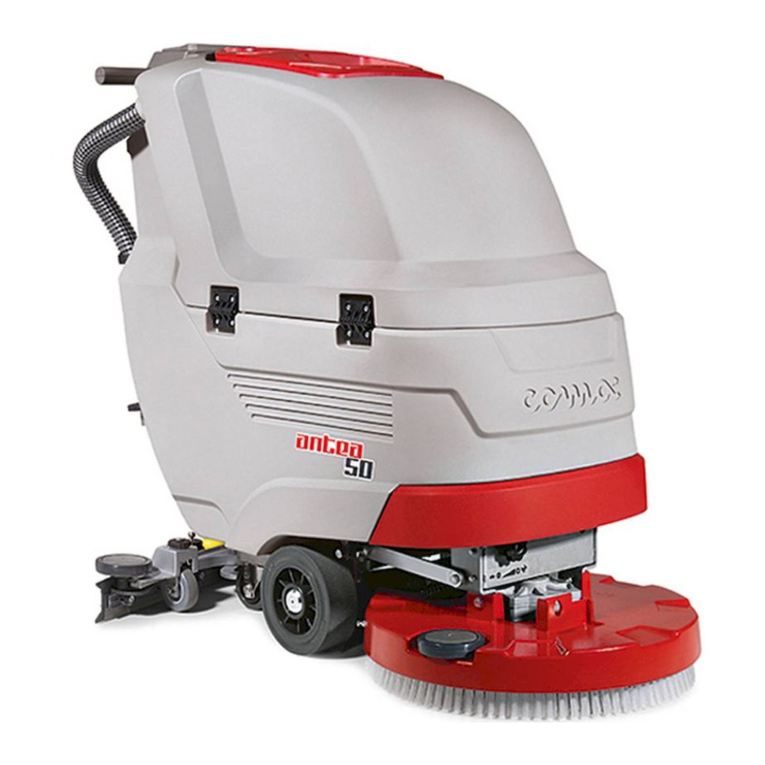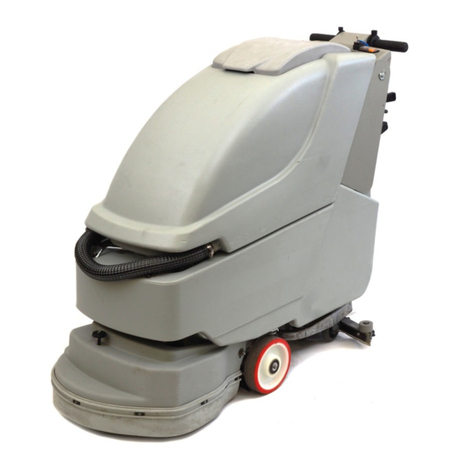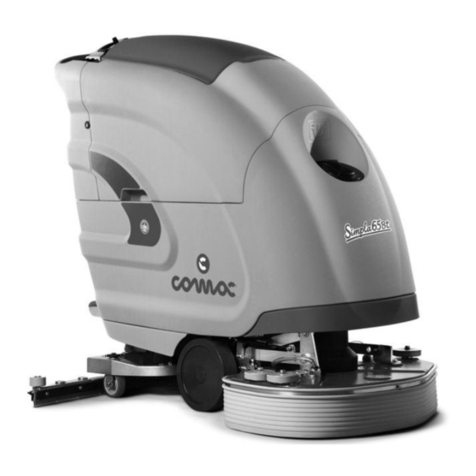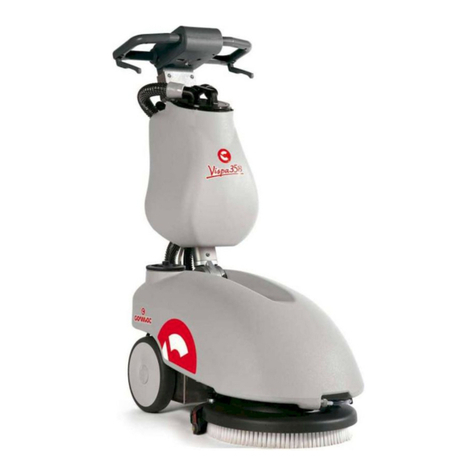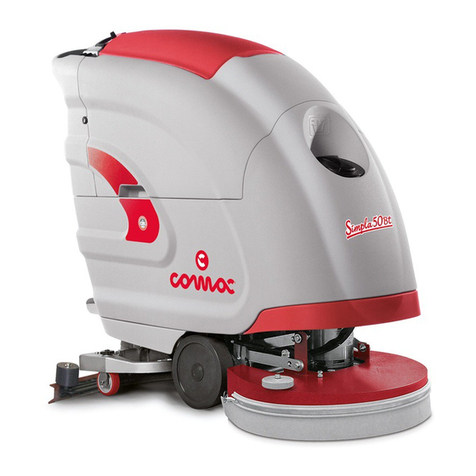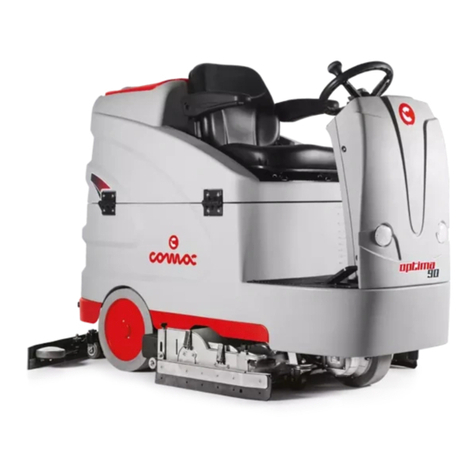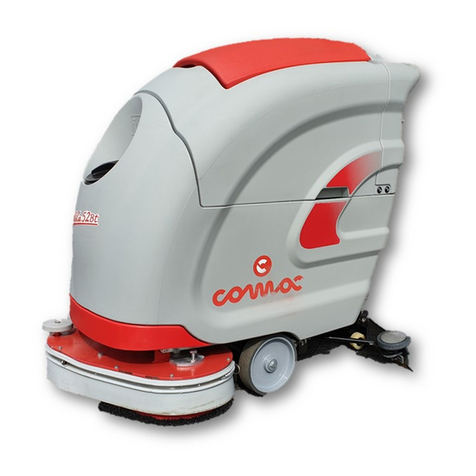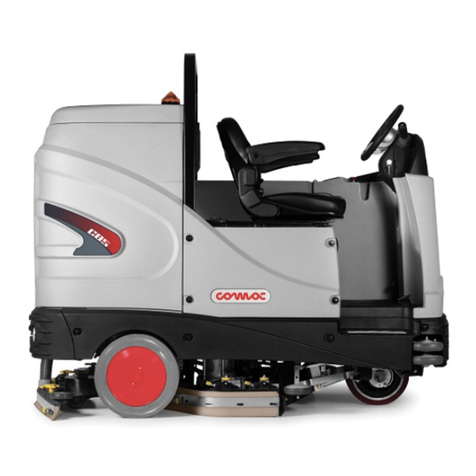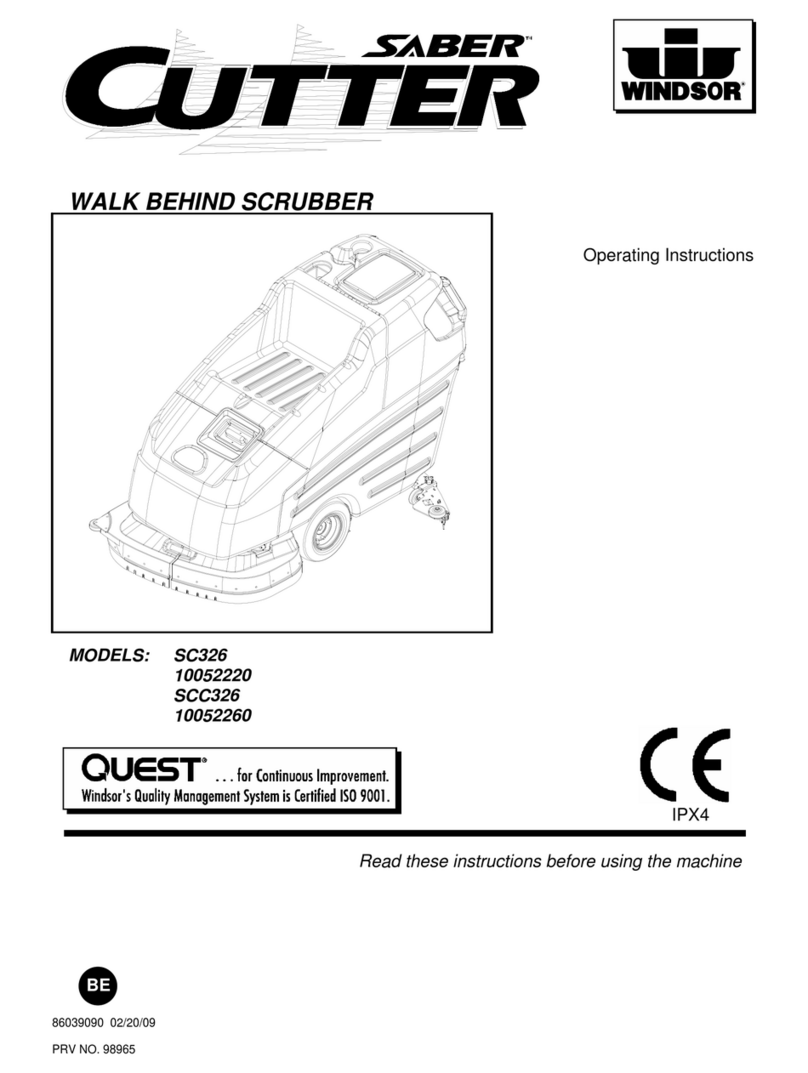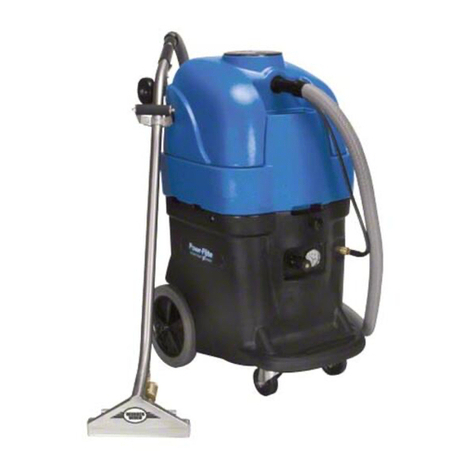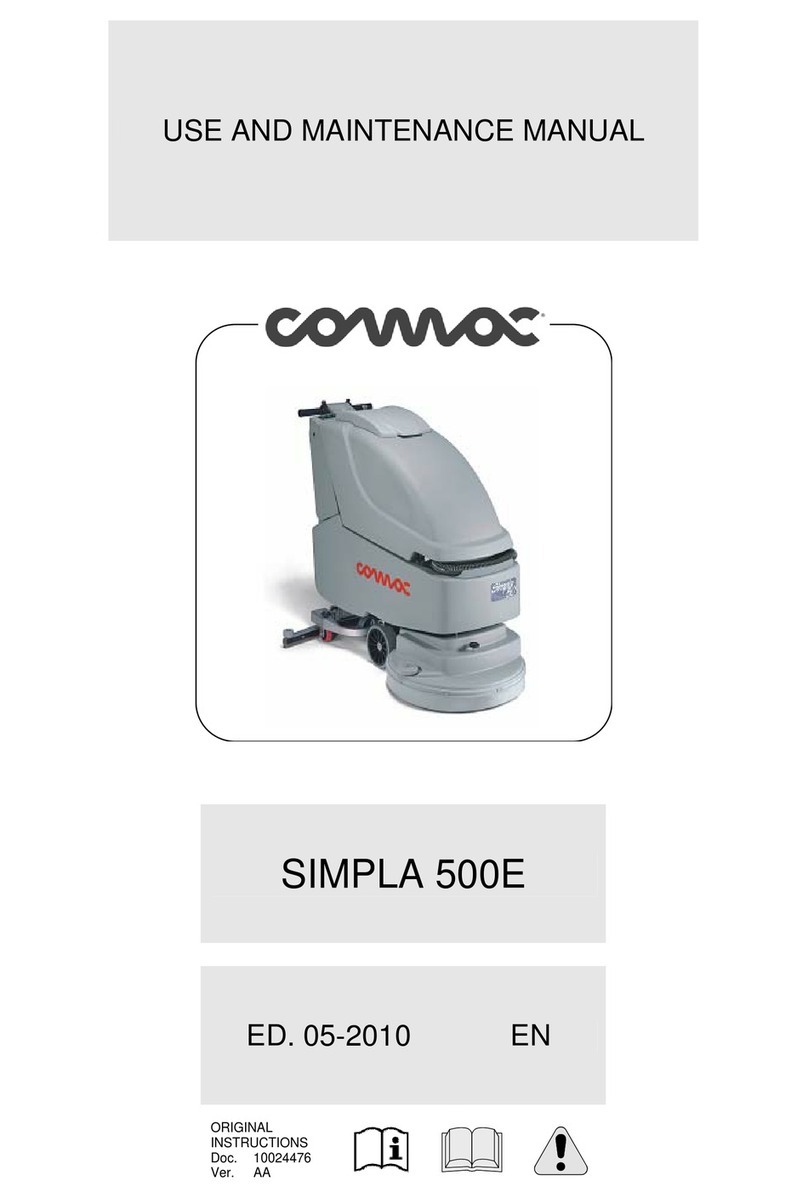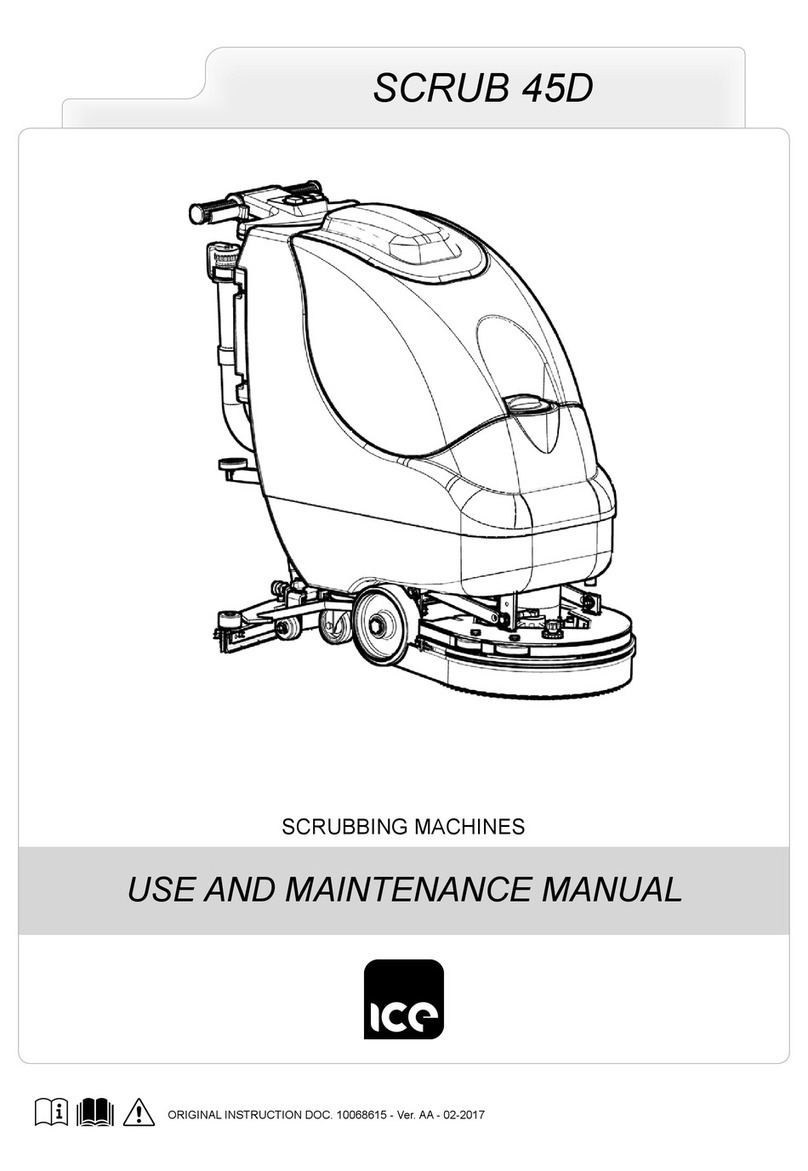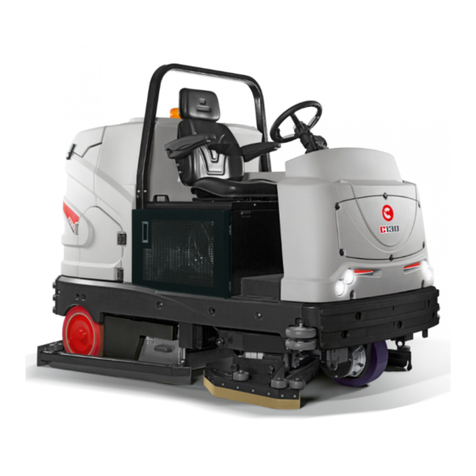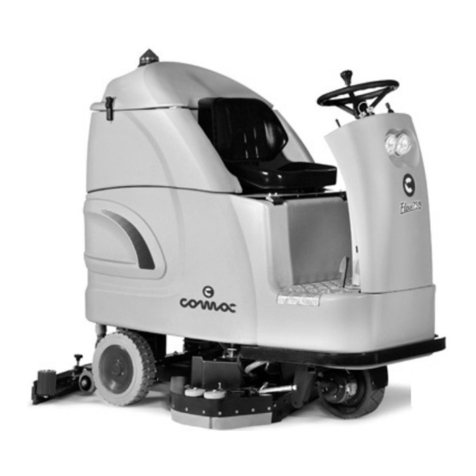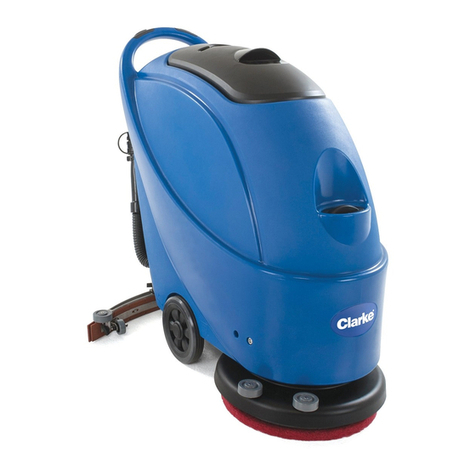
6
MAIN MACHINE COMPONENTS
The front components of the machine are:
1. Filter retainer ring on vacuum cap
2. Starter battery (G version)
3. Squeegee unit vacuum nozzle
4. Side splash guard vacuum nozzle
5. Detergent level check bulb (CDS versions)
6. Vacuum cap
7. Side carter
8. Battery box (B version)
9. Vacuum cap retainer hinge
10. Recovery tank retainer hinge
11. Battery connector
12. Electrical system connector
13. Brush motor thermal circuit breaker
14. Vacuum motor thermal circuit breaker
15. Command display
16. Headlights
17. Starter battery retainer (G version)
18. LPG cylinder retainer (G version)
19. Rear rubber-pressing blade retainer
20. Gasoline tank lter (G versions)
21. Detergent solution lter
22. Solution tank inlet cap lter
23. Squeegee front rubber blade
24. Squeegee rear rubber blade
25. Rung
26. Quick female connection (CDS versions)
27. Quick male connection (CDS versions)
28. Machine tail-light command switch
29. Main key switch (B version)
30. Main key switch (G version)
31. External blade on splash guard rubber-pressing blade
32. Retainer blade for vacuum cap rotation
33. Internal blade on splash guard rubber-pressing blade
34. Front rubber-pressing blade
35. Rear rubber-pressing blade
36. Blinking light
37. Command lever for machine direction switch
38. Command lever for brush head sideways movement switch
39. Tap command lever
40. Command lever for engine air (G versions)
41. Parking brake lever
42. Engine rpm adjustment lever (G version)
43. Squeegee rotation release lever
44. Side splash guard movement handle
45. Handle for raising seat mounting plate
46. Command knob for selector switch for the fuel to be injected in
the endothermic engine carburettor
47. Command knob for switch to select the pressure on the
brushes
48. Command knob for working program selection switch
49. Command knob for working speed selection switch
50. Detergent percentage adjustment knob (CDS version)
51. Adjustment knob for quantity of water in the water system (CDS
version)
52. Spring safety clip
53. Control panel
54. Control panel (G version)
55. Front splash guard on brush head
56. External splash guard
57. Internal splash guard
58. Right side splash guard
59. Left side splash guard
60. Rear splash guard on brush head
61. Brake pedal
62. Drive pedal
63. Squeegee unit retainer knob
64. Knob for adjusting the height of the squeegee unit
65. Rubber-holder for optional quick solution tank lling kit
66. Vacuum cap lter guard
67. Buzzer button
68. Command display conrmation button
69. Gasoline bypass tap (G version)
70. Detergent solution bypass tap (CDS version)
71. Detergent solution lter tap
72. Operator seat
73. Gasoline tank (G version)
74. Detergent tank (CDS version)
75. Recovery tank
76. Solution tank
77. Red indicator light showing a traction engine fault
78. Red indicator light showing that the parking brake is ON
79. Red indicator light showing that the liquid in the solution tank
has reached reserve level
80. Red indicator light showing that the liquid in the recovery tank
has reached the overow level
81. Red indicator light showing that the liquid in the braking system
has reached a critical level
82. Red indicator light showing that the brush head engine is
working beyond the critical threshold
83. Green indicator light showing that the machine tail-lights are
working
84. Green indicator light showing that the brush head unit is back in
its standard position (inside the machine body)
85. Green indicator light showing that the squeegee unit has
reached its working position
86. Green indicator light showing that the left-hand vacuum motor
is functioning
87. Green indicator light showing that the right-hand vacuum motor
is functioning
88. Green indicator light showing that the electrical motor in the
brush head is functioning
89. Green indicator light showing that the solenoid valve in the
machine water system is functioning
90. Green indicator light showing that the main switch is functioning
(B versions)
91. Green indicator light showing that the main switch is functioning
(G versions)
92. Safety clip
93. Side splash guard retainer pin
94. Starter battery support (G version)
95. LPG cylinder support (G version)
96. Support for engine oil drainage tube (G versions)
97. Gasoline tank inlet cap (G versions)
98. Solution tank inlet cap
99. Cap of recovery tank maintenance drain well
100. Detergent tank cap (CDS version)
101. Cap for engine oil drainage tube (G versions)
102. Squeegee vacuum tube
103. Side splash guard vacuum tube
104. Gasoline tank level tube (G versions)
105. Engine oil drainage tube (G versions)
106. Recovery tank drainage tube
107. Solution tank drain pipe
108. Rubber-pressing blade retainer screw
109. Adjustment screw for squeegee tilt
110. Steering wheel
